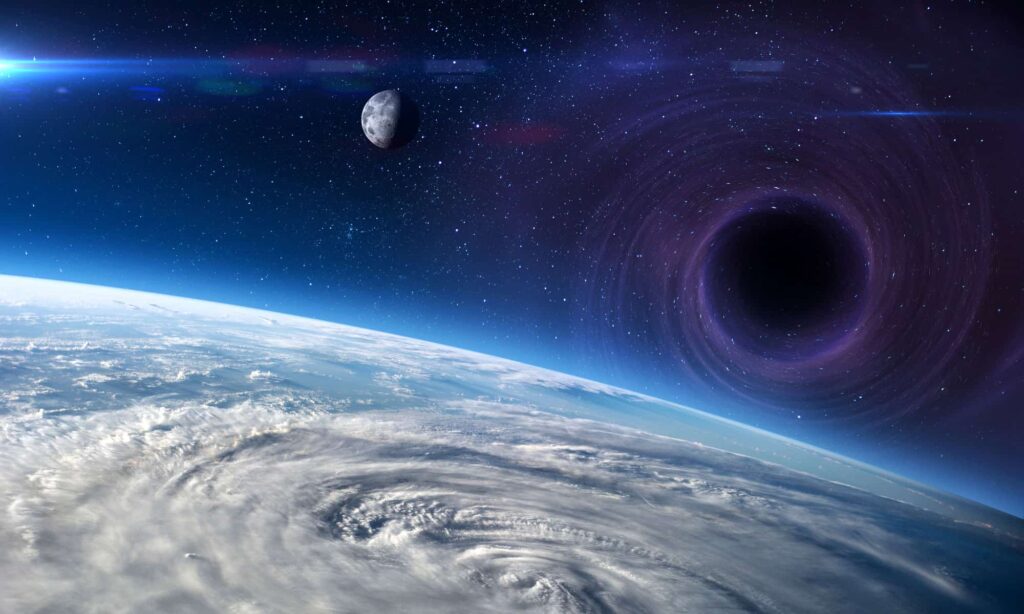Humanity lives on a thin edge: we barely scratch beneath the crust of our planet and routinely travel only within less than 10 miles of the atmosphere. So when you think about it, every day that life continues in this narrow zone is a miracle. Natural disasters expose just how vulnerable and precious life is. This guide outlines 15 of the most catastrophic natural threats facing humanity today—explaining what causes them, who’s most at risk, and how likely they are to occur—based on current scientific research and global trends.
1. Mega-Earthquakes

Older buildings are usually most at risk in earthquake zones.
©C.E. Meyer / Public Domain – Original / License
Mega-earthquakes are powerful seismic events, usually exceeding magnitude 7, that can cause devastating damage to infrastructure and loss of life. They occur due to the movement of tectonic plates along fault lines, especially in subduction zones. Regions most at risk include the Pacific Ring of Fire—such as Indonesia, Japan, and the west coast of North and South America. Turkey, Iran, India, and Nepal also sit on very active fault lines. The central U.S. is also at risk from the New Madrid fault in Missouri. While smaller earthquakes are common, large-scale events like the 2004 Indonesian quake or the 2011 Japan quakes are expected to occur every few centuries in high-risk zones.
2. Tsunamis
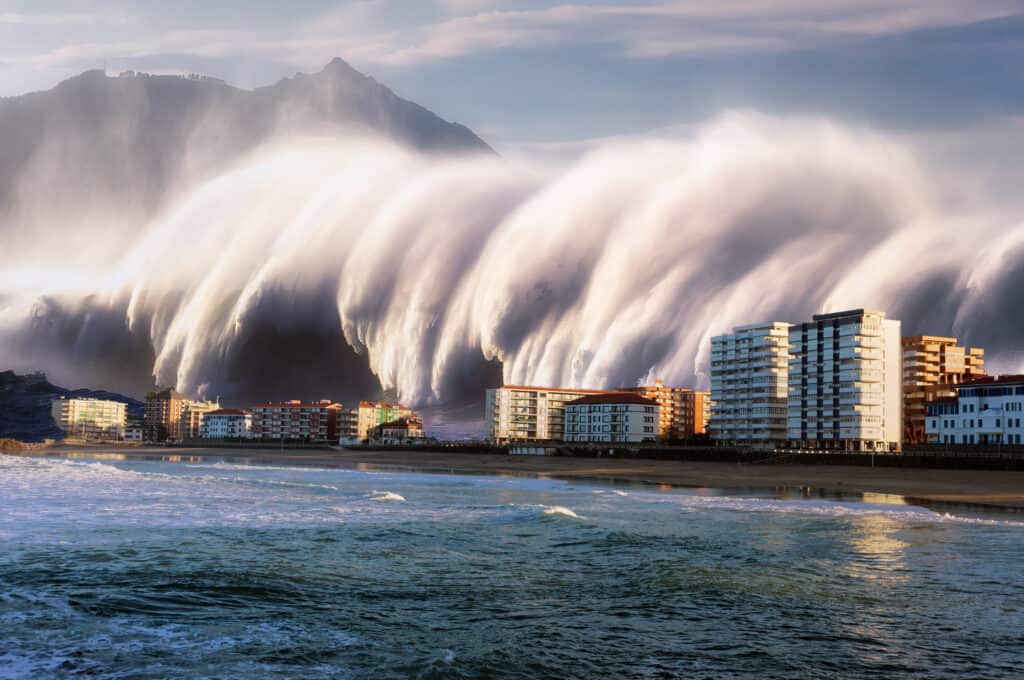
This artistic representation illustrates what a mega-tsunami might look like from a major geologic event under the sea.
©Mimadeo/Shutterstock.com
Tsunamis are massive, fast-moving waves caused by undersea earthquakes, volcanic eruptions, or landslides that displace large volumes of water. When they strike coastal areas, they can inundate entire communities with little warning. Vulnerable regions include the Indian Ocean rim, Pacific coastlines (especially Japan and the U.S. West Coast), and parts of the Caribbean and Mediterranean. Events like the 2004 Indian Ocean tsunami and the 2011 disaster in Japan have demonstrated their devastating potential. Though local tsunamis occur fairly regularly, global megatsunamis—such as those theorized from volcanic flank collapse—remain rare but extremely dangerous.
3. Supervolcano Eruptions
A supervolcano eruption is not just a regional problem, but a global one. Ash and gases released into the atmosphere can lower global temperatures and disrupt agriculture.
©Ammit Jack/Shutterstock.com
Supervolcano eruptions are among the most powerful natural disasters on Earth, releasing over 1,000 cubic kilometers of volcanic material and causing global climatic effects. These are typically caused by the buildup of immense pressure beneath a large magma chamber. Notable supervolcanoes include Yellowstone (USA), Campi Flegrei (Italy), Taupō (New Zealand), and Aira Caldera (Japan). Although the chance of a full VEI-8 super-eruption occurring in our lifetimes is exceedingly low, smaller explosive eruptions from these systems remain possible and could cause significant regional impacts.
4. Tropical Cyclones

Hurricanes are forecast to increase in size, intensity, and number due to climate change.
©NASA / Public Domain – Original / License
Tropical cyclones—known as hurricanes or typhoons—cause widespread destruction through high winds, torrential rainfall, and coastal storm surges. Rising sea levels make storm surges more dangerous and frequent. Vulnerable areas include the southeastern United States, the Caribbean, Southeast and East Asia (especially the Philippines, Bangladesh, and Japan), and low-lying island nations such as Tuvalu or the Maldives. Climate change is increasing ocean temperatures, fueling stronger storms and worsening the impacts of flooding. This Coastal Risk Screening Tool by Climate Central can help you determine the risk in your area.
5. Heat, Drought & Wildfire

Wildfires are part of nature’s way of renewing the forest with new growth, but climate change makes them larger and more difficult to put out.
©Quantum Hydra/Shutterstock.com
Extreme heat events, prolonged droughts, and massive wildfires are increasingly linked due to global warming. High temperatures and reduced rainfall dry out vegetation, creating prime conditions for uncontrollable fires. Vulnerable regions include the western U.S., southern Europe, Australia, the Middle East, and parts of Brazil and sub-Saharan Africa. These hazards threaten human health, agriculture, ecosystems, and infrastructure. As global temperatures rise, these compound events are becoming more frequent, more intense, and more widespread.
6. Megafloods

Flooding can quickly destroy infrastructure and take a tremendous toll on life and property.
©CMS Photography/Shutterstock.com
Megafloods and rain-triggered landslides result from extreme precipitation events that overwhelm drainage systems and destabilize terrain. Monsoon-affected regions like India, Nepal, Pakistan, and Bangladesh are particularly at risk from these destructive natural disasters, as are steep terrains in China, the U.S. Appalachians and West Coast, and parts of South America and East Africa. Contributing factors include deforestation, urban sprawl, and climate-driven shifts in rainfall intensity.
7. Blizzards & Avalanches
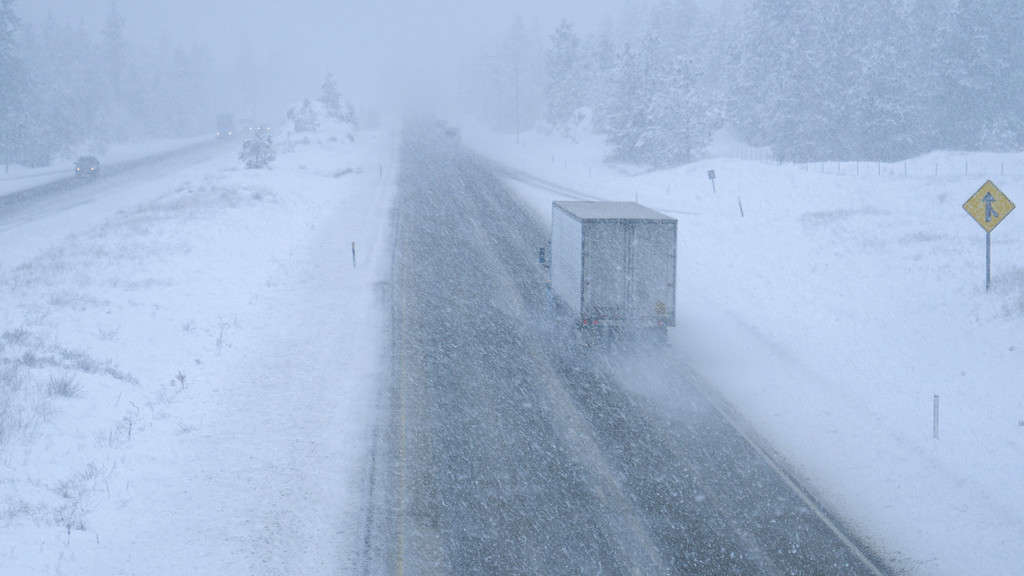
Cargo trucks and cars make their way through an intense blizzard along a dangerous country road.
©helivideo/iStock via Getty Images
Severe winter storms and avalanches are natural disasters that pose serious risks to life and infrastructure in high-latitude and mountainous areas. They are driven by interactions between cold air masses and moisture-laden systems, often influenced by the jet stream. The northern U.S., Canada, European Alps, Scandinavia, Himalayas, and Andes are especially vulnerable. While these events are seasonal, their frequency and intensity are becoming more unpredictable due to climate change. Also, with a generally more volatile environment, areas that don’t usually see snow can have uncharacteristic storms without the means and experience to mitigate their effects on the population.
8. Tornadoes

Traditionally, the American Midwest experiences the most tornadoes in the country, but the South is rivaling it as a new “Tornado Alley.”
©Grey Zone/Shutterstock.com
Tornadoes are destructive high-velocity windstorms that sometimes accompany severe thunderstorms. The United States, especially the Midwest and Southeast, experiences the majority of the world’s tornadoes. Other risk zones include Bangladesh, eastern India, parts of Argentina, and southern Canada. Tornadoes are highly localized but extremely destructive. Although forecasting has improved, changing atmospheric patterns may be shifting the timing and geography of tornado-prone zones as well as the frequency and intensity of these storms.
9. Limnic Eruptions

Escaping gas from volcanic lakes can be an invisible but deadly natural disaster.
©assistant/Shutterstock.com
Limnic eruptions are rare but deadly events in which large quantities of dissolved carbon dioxide (CO₂) suddenly erupt from the depths of a lake, forming an invisible, suffocating gas cloud. Because CO₂ is colorless and heavier than air, it can silently flow downhill and displace oxygen, killing humans and animals without warning. This rare phenomenon is primarily a concern in volcanic regions of Central Africa, particularly at Lake Nyos and Lake Kivu, where underlying magma activity keeps deep waters rich in gas. The 1986 Lake Nyos disaster in Cameroon remains the deadliest example—over 1,700 people and thousands of livestock died when a sudden CO₂ release swept through nearby villages without any visible plume. Though these eruptions are extremely rare, their silent lethality makes monitoring and gas-release mitigation systems essential in vulnerable areas.
10. Solar Flares / Coronal Mass Ejections (CMEs)
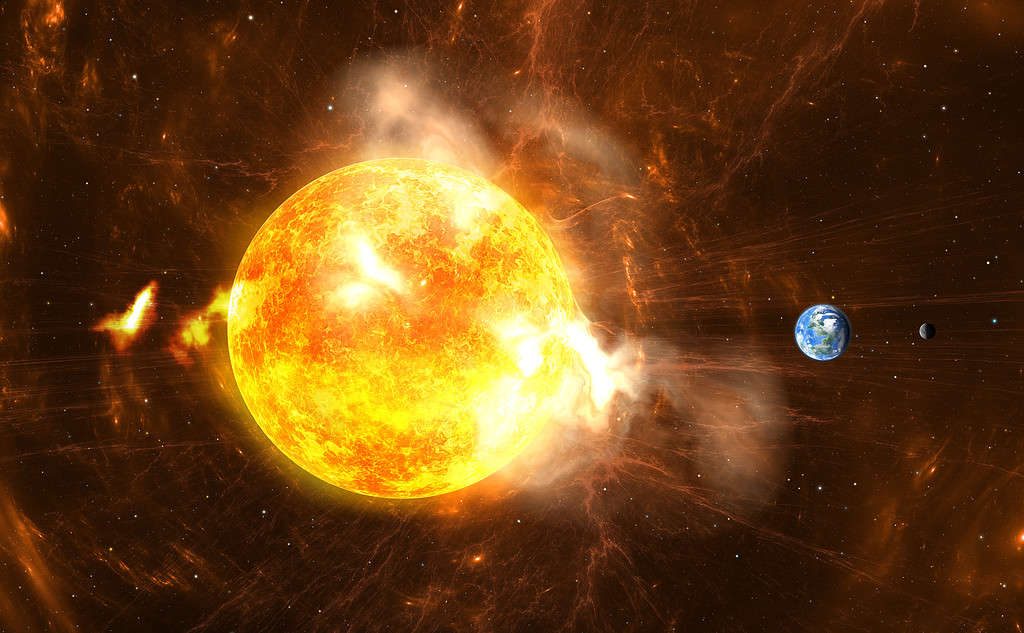
The Earth’s magnetic field protects the planet from standard levels of solar radiation, but could be overwhelmed by a large coronal mass ejection.
©Pitris/ via Getty Images
Solar flares and CMEs are explosive releases of energy from the sun that can disrupt Earth’s magnetosphere. These space weather events can knock out power grids, disable satellites, and interrupt communications, especially in high-latitude countries. Regions like North America, Northern Europe, and Russia are most affected due to their proximity to the poles. While smaller events are common, powerful storms like the 1859 Carrington Event are rare but could cause massive modern disruptions. With the dependence of modern society on electronics, a collapse of the electrical grid and the internet could cause not just widespread inconvenience, but major loss of life as well.
11. Meteor Strike

Small meteors burn up in the Earth’s atmosphere. Larger ones come around more rarely, but can be planet killers.
©Triff/Shutterstock.com
Meteor impacts are low-frequency but high-consequence events capable of regional devastation or even global extinction, depending on the object’s size. Most impacts occur in oceans, but a large enough strike could generate worldwide tsunamis and atmospheric changes. While small meteoroids enter Earth’s atmosphere daily, significant strikes (over 1 km wide) occur every few hundred thousand years. The global nature of the threat means no region is immune, though space agencies now monitor Near-Earth Objects (NEOs) to identify risks in advance.
12. Volcanic Flank Collapse
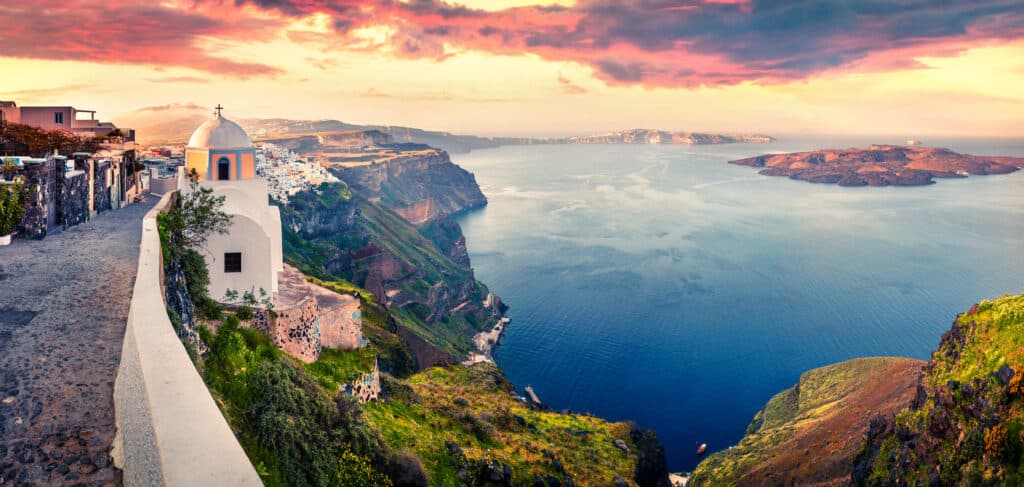
Santorini used to be one island, but past eruptions turned it into a series of separate islands.
©Andrew Mayovskyy/Shutterstock.com
These rare but severe events occur when a volcanic island or caldera partially collapses into the ocean, displacing massive amounts of water and triggering tsunamis. Cumbre Vieja in the Canary Islands and the Santorini caldera in Greece are examples of potential threats. While considered unlikely, a flank collapse at either site could send waves across the Atlantic or Mediterranean, affecting U.S. East Coast cities, the Caribbean, and southern Europe. Though unlikely in the near term, these scenarios are taken seriously by geologists.
13. AMOC Collapse (Atlantic Meridional Overturning Circulation)
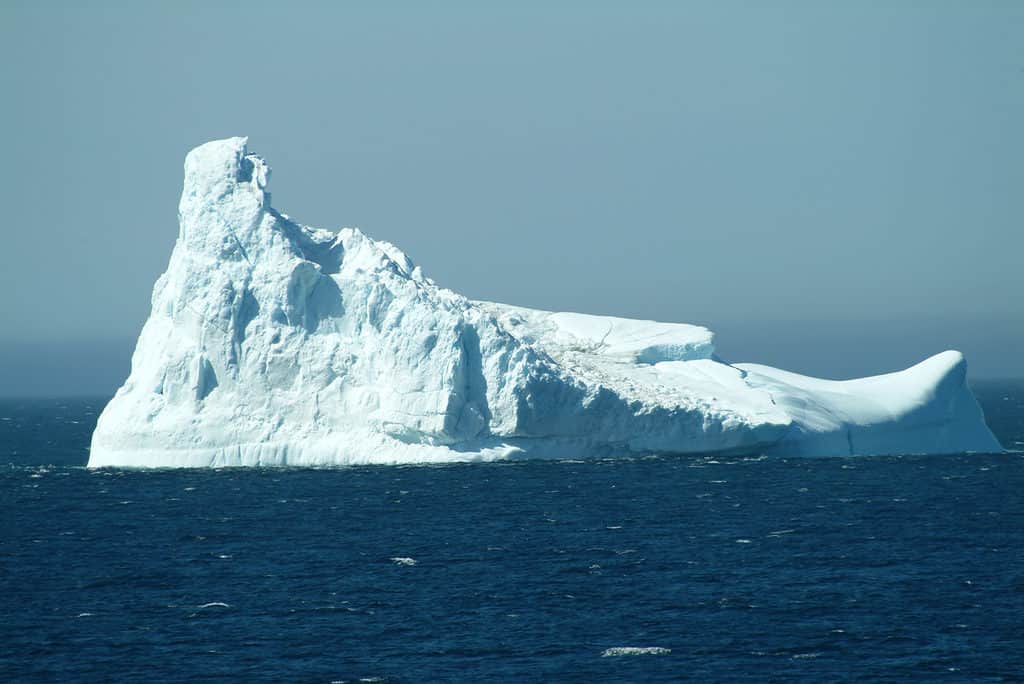
The collapse of the AMOC could make icebergs like this far more common in the seas around Europe.
©David Dennis/Shutterstock.com
The AMOC is a vital system of Atlantic Ocean currents that helps regulate global climate by transporting warm water from the tropics northward. Its collapse, triggered by melting Greenland ice sheets and freshwater influx, could drastically cool parts of Europe, shift monsoon patterns in Africa and Asia, and raise sea levels on the U.S. East Coast. While scientists debate how soon this might happen, models suggest a moderate risk within this century, especially if global warming continues unchecked.
14. Mass Extinctions
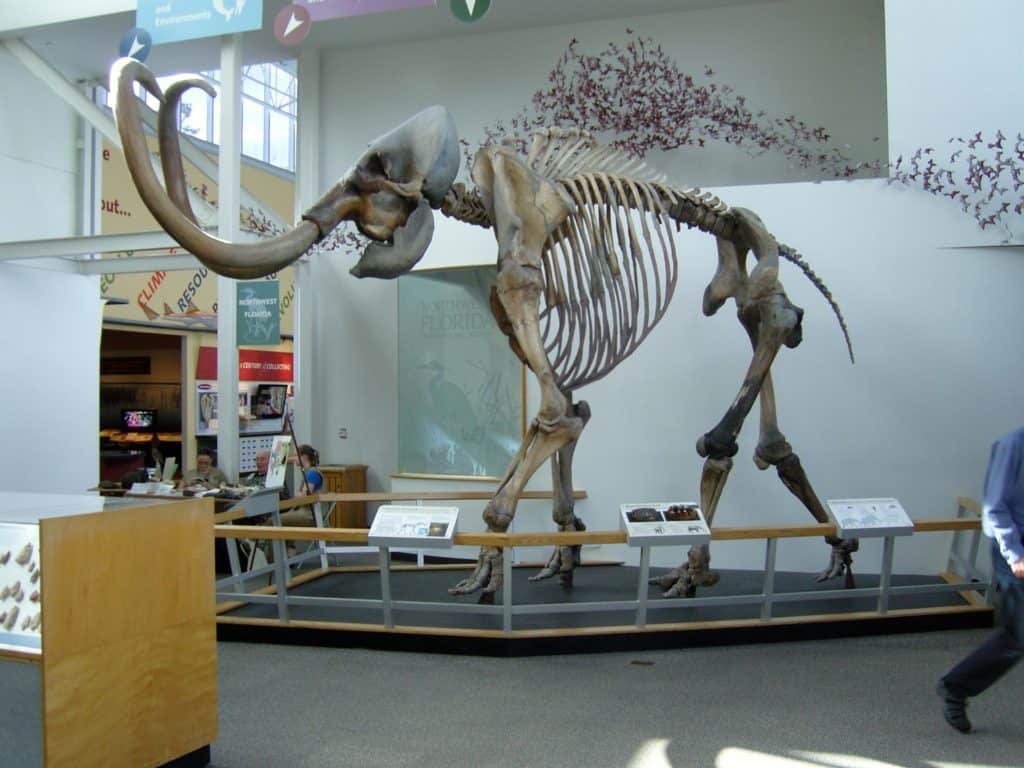
A Woolly Mammoth skeleton. Will future museum goers look at skeletons of extinct African and Asian elephants and other beloved species?
©GorissenM / Flickr – Original
Biodiversity loss due to habitat destruction, climate change, pollution, and invasive species is accelerating worldwide, threatening food systems and ecosystem stability. Coral reefs, pollinators, fisheries, and rainforests are all in decline, particularly in the Amazon, Southeast Asia, and sub-Saharan Africa. Ecosystem collapse can reduce crop yields, increase disease transmission, and undermine the resilience of natural systems we depend on. This is an ongoing global crisis with compounding effects across every continent.
15. Ancient Pathogens

Some bacteria have been known to survive the harshest conditions, including freezing temperatures.
©iStock.com/Md Saiful Islam Khan
As Arctic permafrost melts, long-dormant microbes and viruses trapped in frozen soil for tens of thousands of years may reemerge. Some of these organisms could be infectious to humans or animals. As these have not been in circulation for millennia, modern creatures may have no defense against them. The most immediate concern lies in Siberia, northern Canada, Alaska, and Greenland—areas with vast permafrost layers. While the threat remains uncertain, it is being monitored by climate scientists and epidemiologists alike.
Common Sense Preparation for Natural Disasters
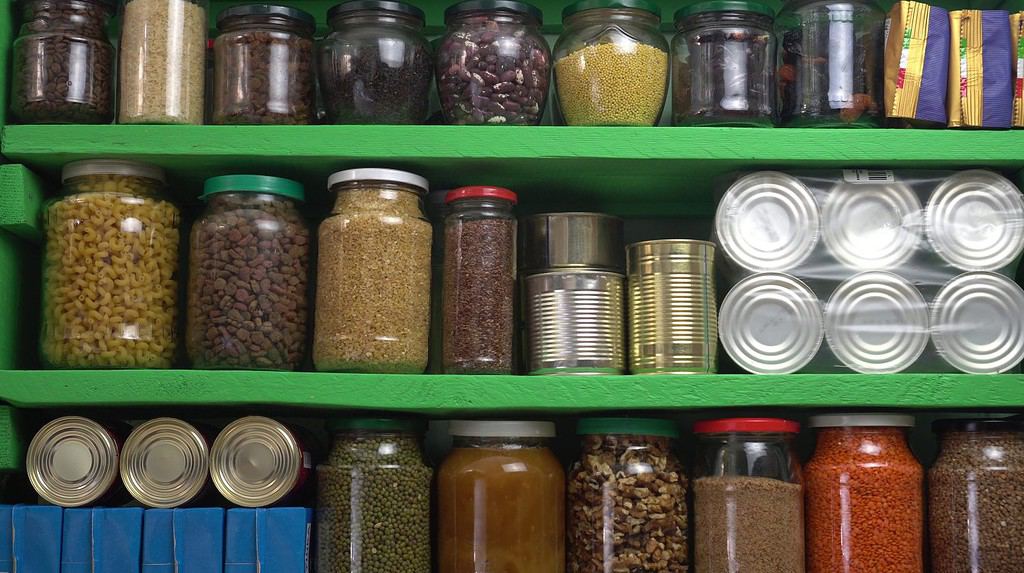
It makes sense to keep a supply of non-perishable food on hand in case of short-term or major disruptions to the supply.
©Fevziie/Shutterstock.com
Although not all disasters can be predicted or prevented, many of the impacts can be mitigated with informed, practical steps. Every household should have a basic emergency kit with clean water, nonperishable food, flashlights, batteries, and first-aid supplies. Know your region’s specific risks—whether it’s tornadoes, hurricanes, or earthquakes—and understand how to respond: where to go, when to evacuate, and how to stay informed. Keep important documents stored safely and consider backup power sources in high-risk areas. On a broader scale, staying engaged with science-based policies and supporting resilient infrastructure can help communities prepare for a changing world. No matter the threat, preparation begins with awareness—and the best time to prepare is before disaster strikes.


